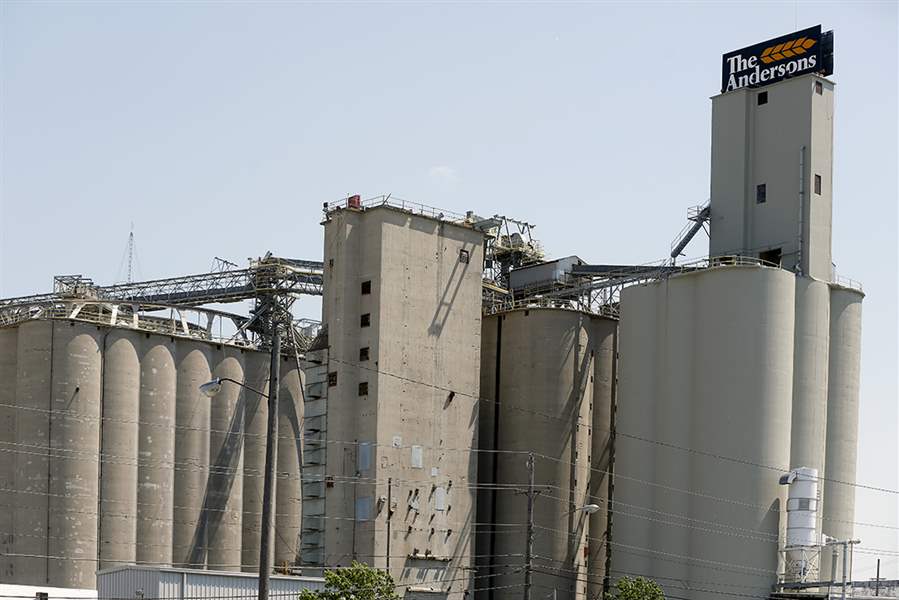
Andersons' stock down 14 percent this year
8/31/2017
The grain portion of the business was the one bright spot, as ethanol, rail and plant nutrients segments suffered disruptions.
THE BLADE
Buy This Image
It’s been a rough few weeks for investors holding stock in The Andersons Inc.
The Monclova Township-based company, which is highly diversified with units involved in grain, ethanol, rail cars, and plant nutrients, has been plagued by disruptions in three of those segments in the second quarter.

The grain portion of the business was the one bright spot, as ethanol, rail and plant nutrients segments suffered disruptions.
As a result, the price of its shares, which are traded on the Nasdaq market, has tumbled from $44.70 at the start of the year to under $32 on Thursday.
Last Friday, the price hit a 52-week low of $30.80 during the day’s trading session. On Monday it dipped to $30.90, the second lowest mark in 52 weeks.
While the share price has moved up slightly, it has lost 13.6 percent in value over the last year while the Nasdaq has gained 23 percent over the same period. The stock lost 30 cents on Thursday to close at $31.75 a share.
Farha Aslam, an analyst with Stephens Inc., said The Andersons’ stock price was being affected by “market dynamics” the company could not have foreseen.
“It’s the ‘X’ factor. It’s low grain prices that are impacting fertilizer prices, there’s the lack of visibility on grain storage, and uncertainty regarding when the positive side on rail will commence,” Ms. Aslam said. “It’s not hiccups on [management’s] part. We are in a difficult cycle.”
In a report issued a week after The Andersons reported its second quarter earnings, Ms. Aslam downgraded the rating for the company’s stock to “equal-weight” from a previous “overweight.” Stephens Inc. also reduced its year-end share price estimate to $35 a share from a previous estimate of $42 a share.
“If the industry dynamics improve, we anticipate earnings and share price to improve,” Ms. Aslam said.
The Andersons said Thursday the company had no one available to comment on its stock performance.

Bowe
But in comments during a conference call with analysts in early August, company Chief Executive Patrick Bowe said agribusiness’ second quarter struggles in ethanol were caused in part by lower average profit margins because of higher ethanol production and large inventories nationally.
The company also remains bedeviled by vomitoxin — a fungus that infects corn and makes livestock who eat it sick. A chief ethanol byproduct is dried grains sold to farmers who raise livestock, and some of The Andersons’ dried grains were still tainted by vomitoxin, mostly in the Eastern Corn Belt.
The company said the issue was improving in the second quarter but its ethanol revenues were affected.
Meanwhile, “rail continues to be impacted by an oversupplied market. While there are some signs that we have seen the bottom of the downturn, the recovery of our utilization rates may be a little more gradual than we thought earlier in the year,” Mr. Bowe told the analysts.
Plant nutrient sales have been hurt by a mix of oversupply, low prices and margins, and a lower customer base that is making “very conservative purchasing decisions,” Mr. Bowe said.
Grain, historically the strongest unit of The Andersons, remains one of the company’s bright spots. It has improved year-over-year in the second quarter, and the company said its performance extended to corn, soybean, and wheat.
Weather conditions for the upcoming corn and soybean crop have been reasonably good with crops in the Eastern Corn Belt — the area where The Andersons has most of its grain operations — in good shape.
Contact Jon Chavez at jchavez@theblade.com or 419-724-6128.